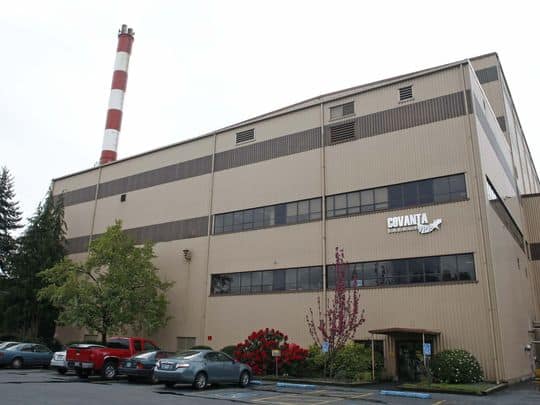
Electricity produced by burning garbage at the Covanta Marion incinerator would be considered renewable energy under a bill in the Oregon Legislature.
Senate Bill 451 would allow the Brooks incinerator to be certified under Oregon’s Renewable Portfolio Standard, which requires 50 percent of the electricity Oregonians use to come from renewable sources by 2040.
That means the incinerator could earn credits for producing renewable energy, which it could then sell to other energy companies needing to offset fossil fuel production.
The bill clarifies the intent of 2016 legislation, which should have included Covanta as eligible for the state program, Covanta spokesman James Regan said.
Regan said he couldn’t estimate the value of the credits.
But opponents are gearing up for a fight, saying the garbage, much of which is plastic, is not a renewable resource.
“In no sense is Covanta Marion either clean or renewable,” leaders of the climate action group 350 Salem wrote to lawmakers.
A coalition of 10 health and environment groups also is protesting legislators’ decision to exempt Covanta Marion from pending cap-and-trade legislation, which would make the state’s largest polluters pay for their greenhouse gas emissions.
Opponents say Covanta is pushing now for inclusion in the decade-old Renewable Portfolio Standard to ensure the garbage burner won’t ever be included in the proposed cap-and-trade program.
Regan said the company requested the bill this year because officials only recently discovered conflicting language in the statute. He said the efforts are not related.
“They’re different bills,” he said.
Sen. Lee Beyer, D-Springfield, is sponsoring SB 451 at Covanta’s request. He did not respond to an interview request.
The bill is set for a public hearing at 1 p.m. Tuesday in Hearing Room C at the Capitol.
Covanta Marion, Oregon’s only garbage incinerator, has operated in Brooks since 1986. It’s a subsidiary of New Jersey-based Covanta Energy Corp. and burns about 550 tons of municipal waste per day, generating up to 13.1 megawatts of energy.
The facility is Oregon’s 20th largest emitter of carbon dioxide, according to the state Department of Environmental Quality.
It emitted 160,843 metric tons of carbon dioxide equivalents in 2017.
About half that amount is anthropogenic emissions, from burning man-made materials such as plastic, much of it out-of-state medical waste.
“We’re bringing in other people’s waste to burn and pollute the skies of Oregon,” said Lisa Arkin, executive director of Eugene-based environmental group Beyond Toxics. “We need to be reducing our use of throwaway plastics, certainly not burning them.”
Regan said garbage incinerators generate less greenhouse gases than landfills, even those that use technology to capture methane.
Incinerators should be treated the same as landfills that capture methane, which also are exempt from the cap-and-trade proposal, Regan said.
Covanta made $30,000 in campaign contributions to lawmakers during 2018, more than it contributed over the previous five years combined.
But the individual amounts were relatively small. The largest amount, $2,500, went to Gov. Kate Brown. Beyer received $2,000.
